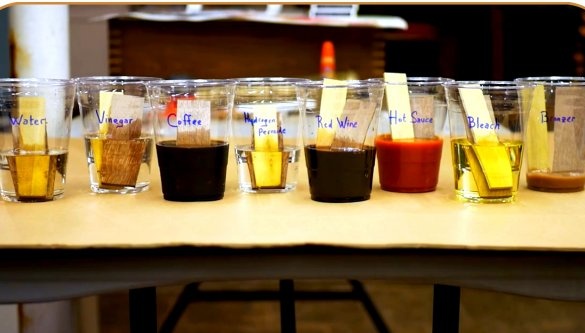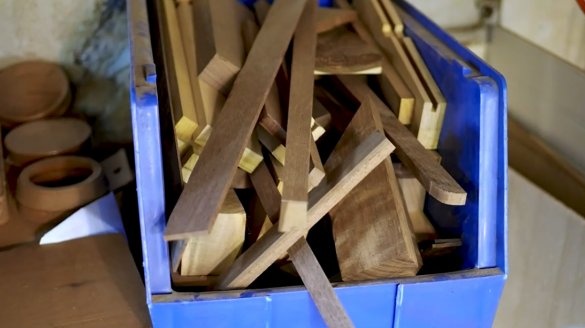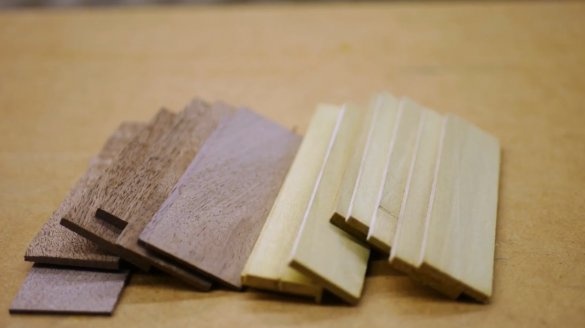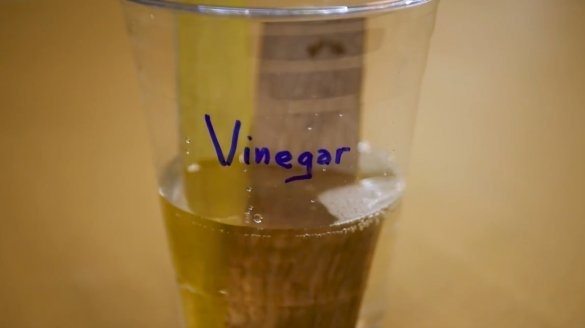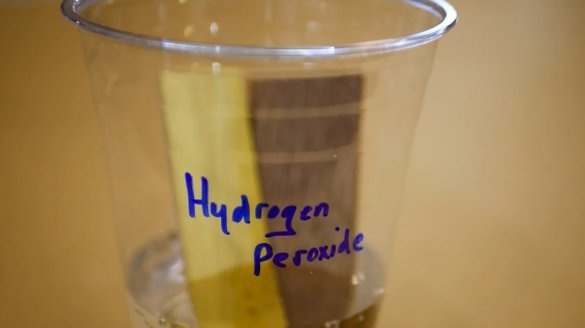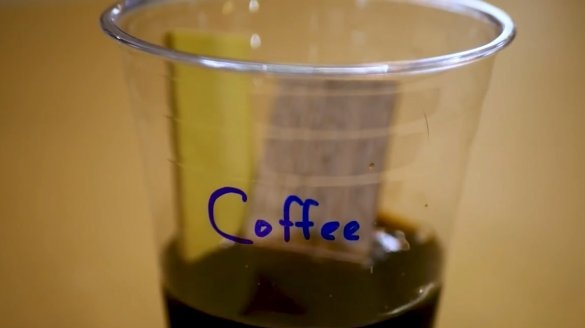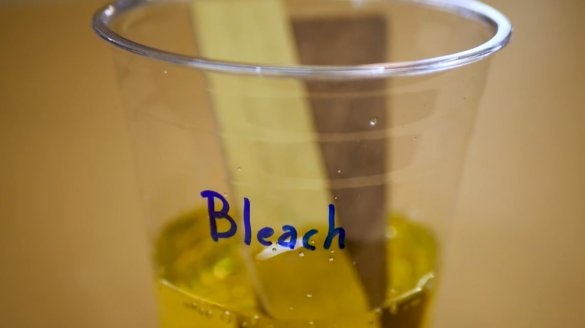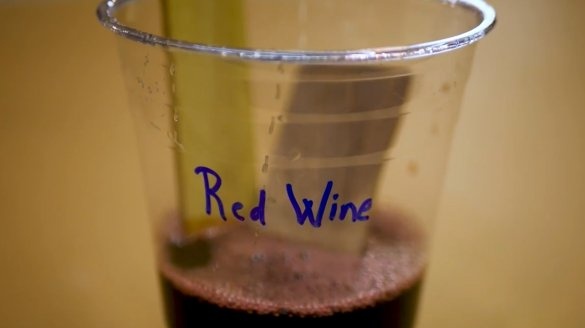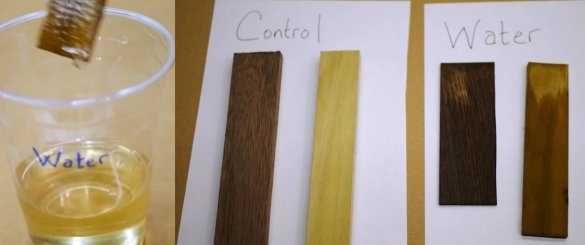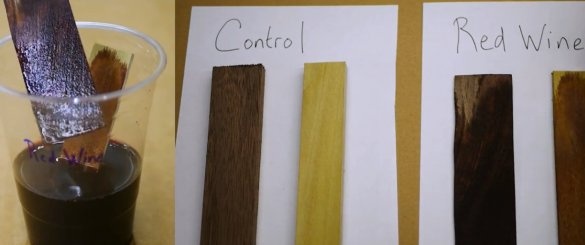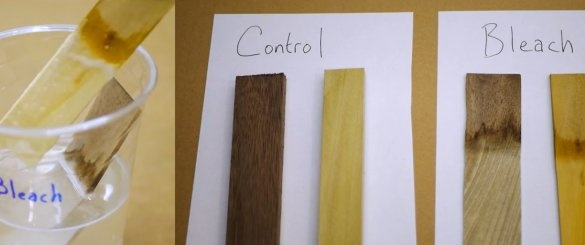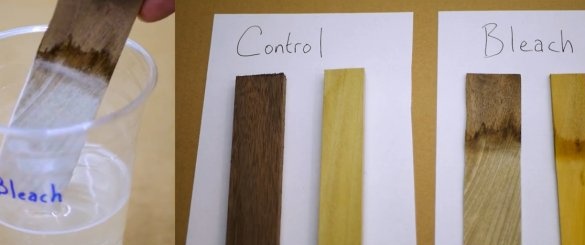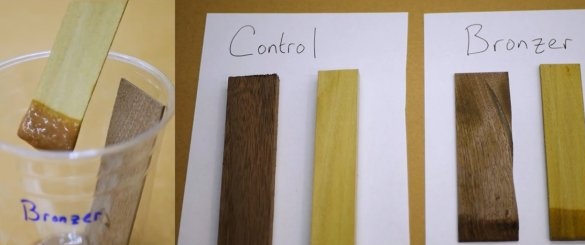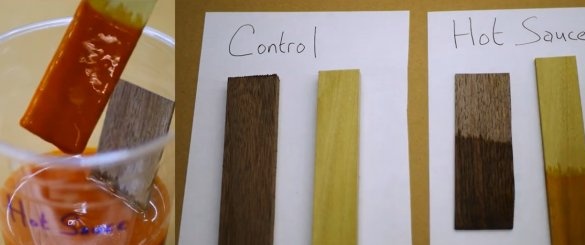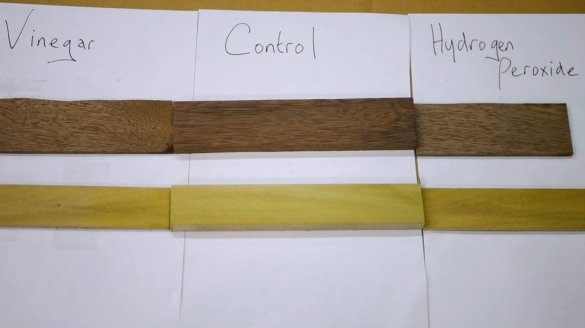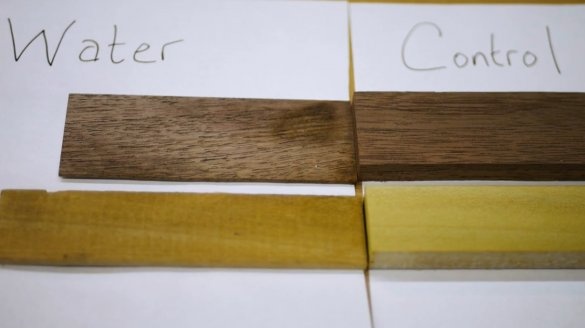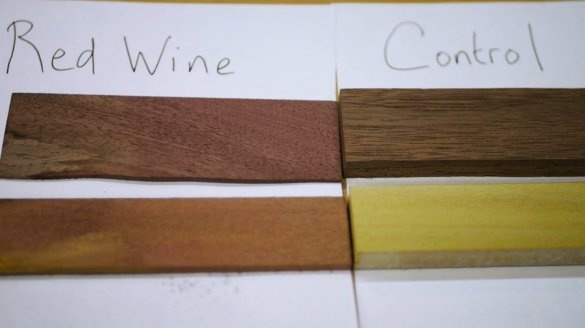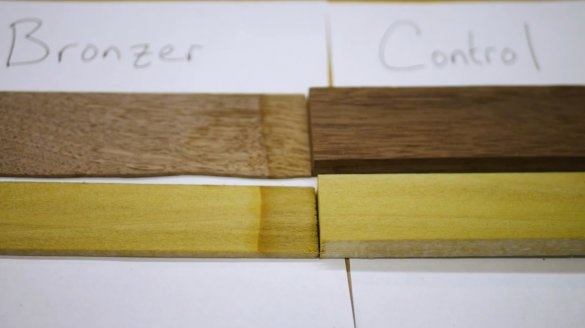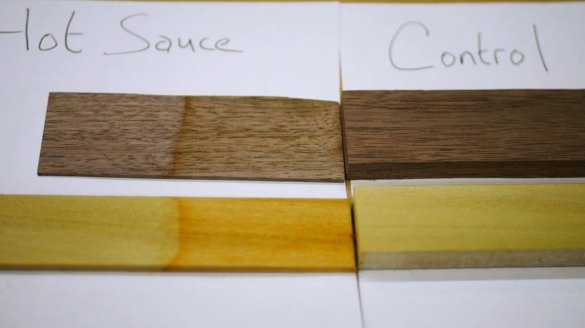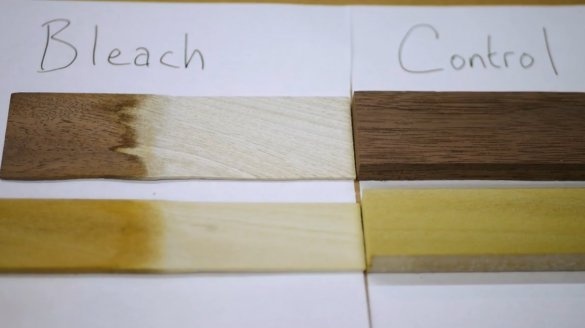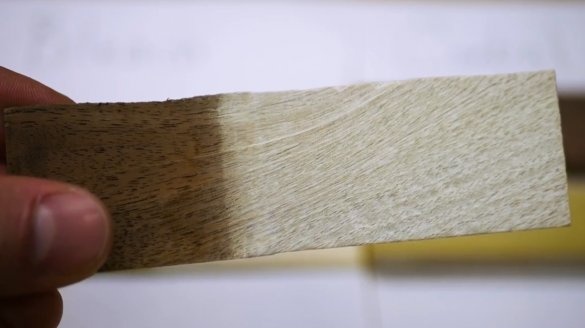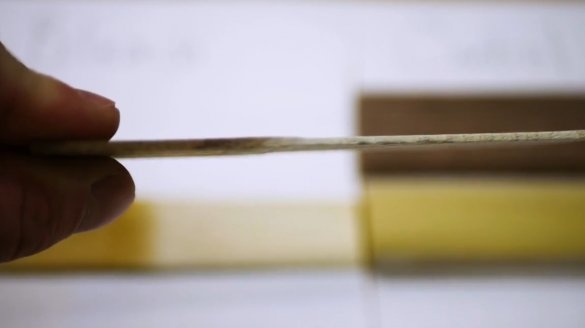In this article, the author of the Measured Workshop YouTube channel decides to conduct a series of experiments on the effects of various liquids and inorganic chemicals on wood. Some results are anticipated by them, and some excite curiosity.
How, for example, does a tree behave in bleach, or in hydrogen peroxide?
Materials
- Plastic glasses
- Dark and light wood.
Instruments, used by the author.
- A circular saw.
Manufacturing process.
The first thing the author does is to cut on a circular loom several thin plates of two hard sorts of wood - hazel and poplar. The wood of the first is dark, while the wood of the second is quite light. So the author wants to check the whole gamut of shades.
So, here are some plastic cups. The first control cup. There will be tablets in it without any changes, as they are.
In each of the remaining cups, the “discoverer” pours a certain sort of liquid
(about 2/3 glasses) and puts two copies of wood there, dark and light.
He gets containers with ...
1) water
2) vinegar
3) hydrogen peroxide
4) brewed black coffee
5) liquid bleach
6) spicy red sauce
7) red wine
8) a pasty tanning agent
All cups are left for 5 hours. During this time, certain changes in the color or texture of the tree should occur.
And so it looks like a tree after water: it is slightly swollen and darkened. But this effect is reversible.
It was red wine, both plates were saturated over almost the entire length, and changed color.
But in black coffee, the poplar was clearly stained, became darker.
This is how the samples look after hydrogen peroxide.
And this is bleach. He not only bleached wood, but also partially “ate” its fibers!
Now a tan.
Hot red sauce.
And finally, vinegar.
After drying, the impregnation lines on many samples completely disappeared.
For example, vinegar and hydrogen peroxide almost did not change the color and texture of wood.
Here on this pair on the left there are traces of damage from water.
The wine turns hazel crimson, and gives the poplar a reddish hue.
From coffee, too, appears a slight shade of poplar.
Sunblock and hot sauce also leave discoloration.
Worst of all happened with bleach - wood has been hit hard.
Now you understand what can happen with natural wood.Therefore, it should always be protected with a top coat of varnish, impregnated with linseed or other oil, or wax.
Thanks to the author for a simple but very revealing experiment with wood!
All good mood, good luck, and interesting ideas!
Author video can be found here.

